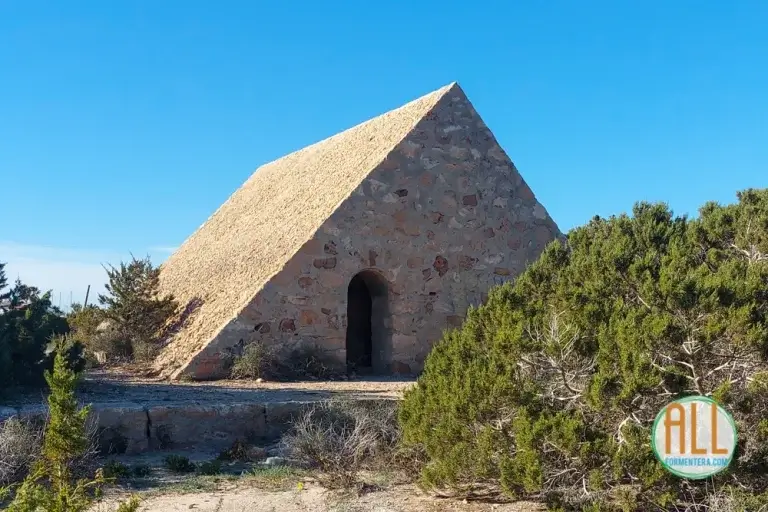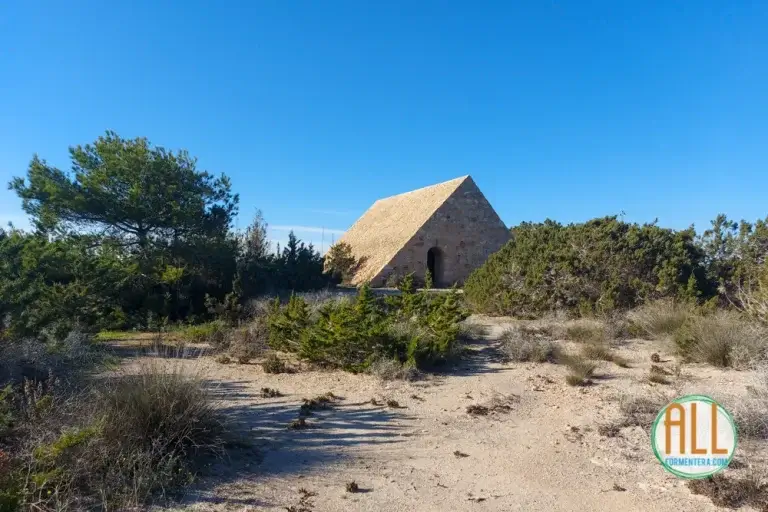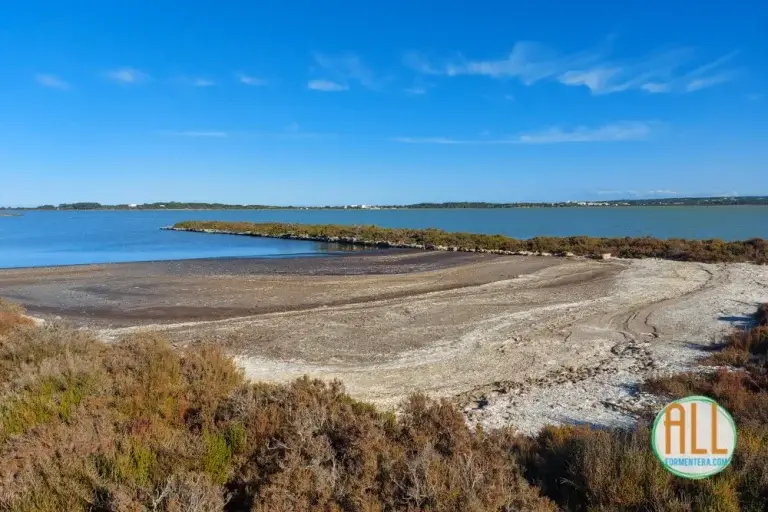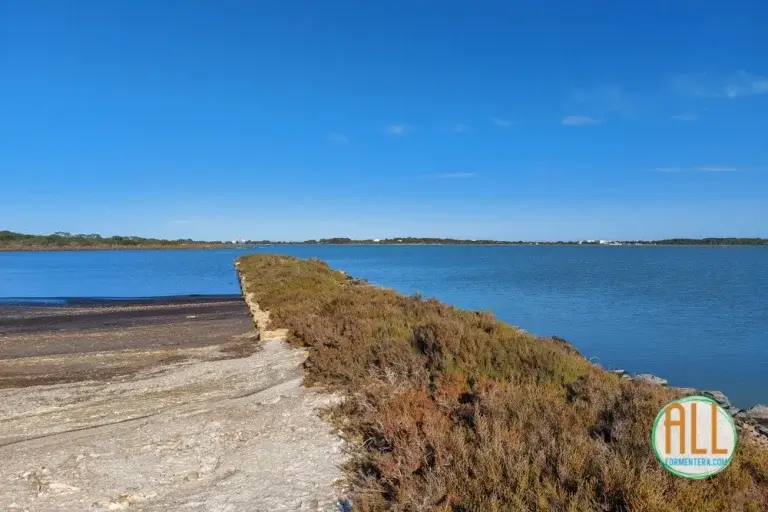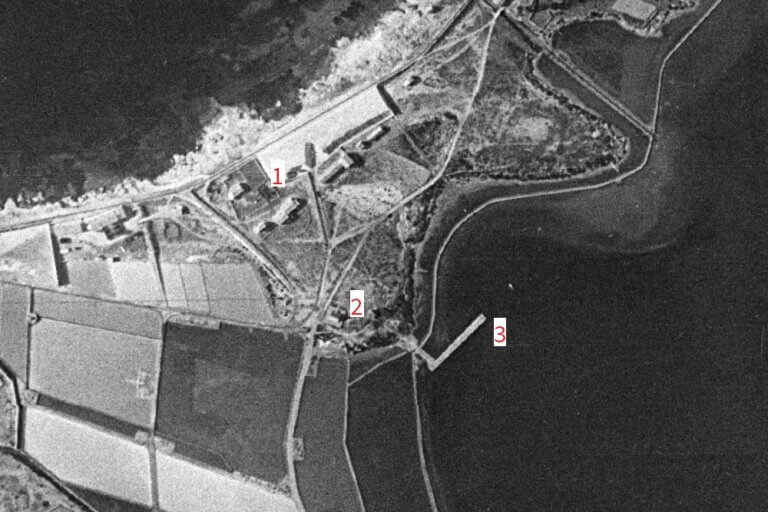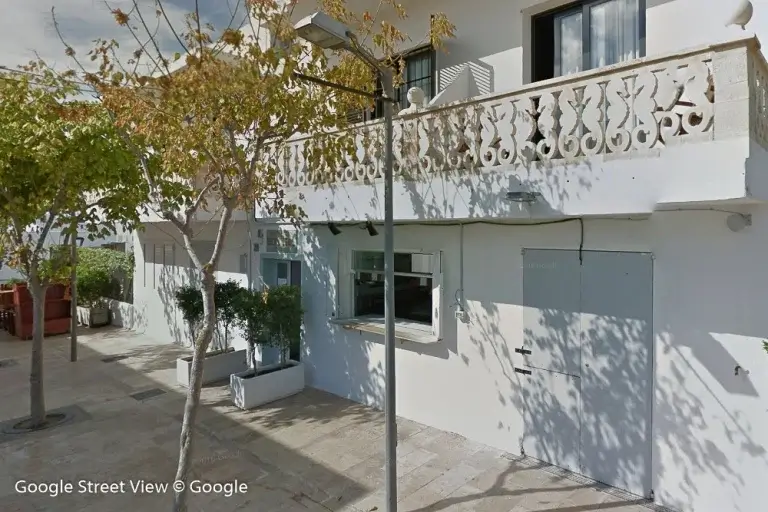Did you know that in Formentera there was a seaplane base of the Franco regime during the years 1937-1953? It was located in Estany Pudent lake, near La Savina, and its remains are still standing and can be visited.
History of the Formentera seaplane base
The Franco regime built this seaplane base to control the southernmost part of the Balearic Islands. The Formentera seaplane base was the third spanish seaplane base in the Mediterranean, together with Atalayón (in Melilla) and Pollença (in Mallorca) and depended at command level on the latter.
The seaplane base at Formentera was therefore a “forward command base” that depended on the Pollença air base and acted as a support base: for repairs, for shelter, for refueling… without the aircraft having to fly to Mallorca island.
Construction and commissioning of the seaplane base
The seaplane base of Formentera was built in 1937, almost at the same time as the prisoner concentration camp of Es Campament. At that time, the land was owned by the Salinera Española company, which ceded it to the Air Force.
Advantages of using Estany Pudent as a seaplane base
Estany Pudent lake is the perfect environment for seaplanes to land:
- It is deep enough so that the seaplanes could float without being damaged.
- Sufficient length to allow aircraft to take off and splashdown/landing safely
- As it is an enclosed lake, it does not matter if the sea is in bad conditions or if there are storms: the planes can continue to take off and splashdown/landing without problems because the waters are always calm.
Hydroplanes that operated at the Formentera base
The aircraft models that operated at the Formentera seaplane base were aircraft that were either already owned by the army, or were on loan from Italy and Germany (regimes that collaborated with Franco) or aircraft from these two countries that used the base as a refueling and assistance point during the Second World War.
The specific seaplane models were as follows:
The flying boat base during World War II
The German airplanes that were damaged in the combats with the British in the North of Africa spontaneously used the bases of Pollença and Formentera as place of refuge and repair of the airships.
In addition, from 1940 onwards the Franco regime decided to reinforce the security of the seaplane base in Formentera, as well as to make extensions to the buildings to accommodate more troops: in 1944 the facilities of the Es Campament concentration camp were used to accommodate infantry soldiers from Ibiza; the house where the Sa Sequi restaurant is currently located was also occupied.
From Formentera the seaplanes performed only reconnaissance tasks. The radio operators issued weather reports and guided the planes coming from Pollença to ditch and take off.
Base closure
 Aerial photo of the Formentera hydro base on July 27, 1957. 1: radio and troop buildings; 2: fuel depot; 3: wharf
Aerial photo of the Formentera hydro base on July 27, 1957. 1: radio and troop buildings; 2: fuel depot; 3: wharf
Once the Second World War ended, the troops stationed in Formentera began to decrease progressively until the base was empty.
By 1950 most of the aviation troops had left the base, and in 1953 the radio station was closed. The radio equipment was moved to the airfield of Cala Codolar, in Ibiza, which later became the current Ibiza airport.
What remains of the seaplanes base in Formentera
If you want to visit the old seaplane base of Formentera you should know that part of the facilities are still preserved:
- The seaplane docking dock, though badly deteriorated, is still perfectly visible
- The fuel depot, the pyramidal building just off the road, is in fairly good condition and has been rehabilitated.
- The buildings for the military and radio operators are still standing: they are now tourist accommodations.
More information: documentary“Formentera, base d’hidroavions” (in catalan language).
If you want more information about the seaplane base in Formentera we recommend you to have a look at the documentary “Formentera, base d’hidroavions” (Formentera, seaplane base). where the history of this complex is presented with images and original documents from the archives of the spanish Air Force, as well as interviews with some of the people who worked there. A documentary gem that you can not miss if you want to know more about the history of Formentera.

